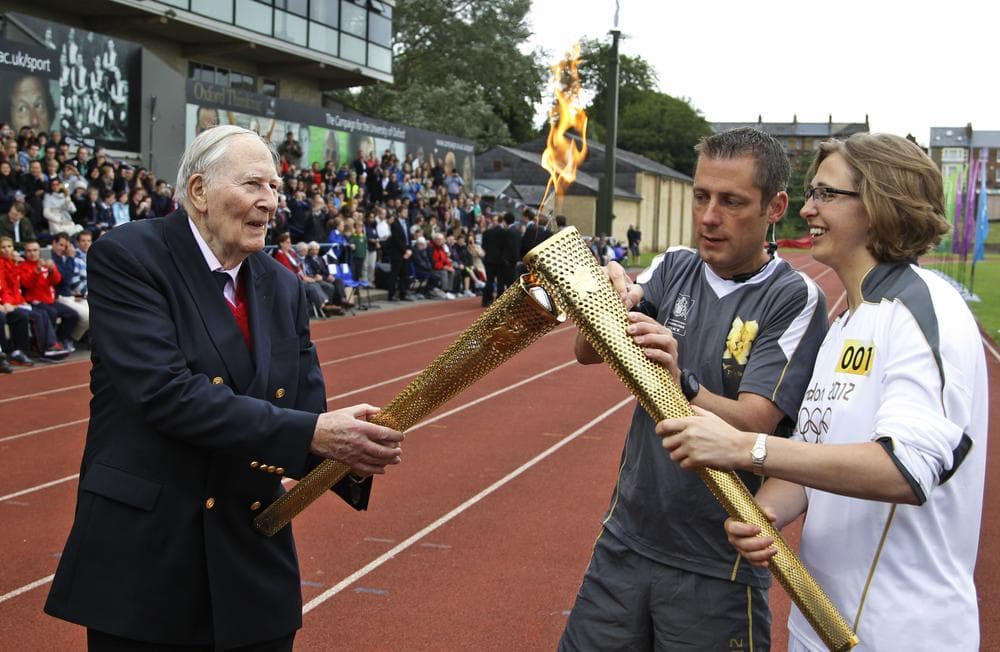Advertisement
In Depth
Bringing The Mile Back To Track
Resume
By Todd Bookman
Track and field has a numbers problem. As in, there are just too many of them. The 60, 26.2, 4x8, 203, 5, 8, 10k…
Back in the 1950s, there was one number that mattered.
"I think there are only a handful of achievements like breaking four minutes for the first time, in any sport, that comes close to what Roger Bannister has done," said Ryan Lamppa of Running USA, an advocacy group for the sport.
In 1954, doctors actually warned runners that breaking the four minute barrier could prove fatal. Bannister, of course, proved them wrong.
But since that achievement, something has died: the mile.
Lamppa, whose personal best is 4:11, wants to return the distance to its former glory. He’s started the "Bring Back the Mile" campaign. "As Americans, we think, speak, and relate in miles," he said. "Our signs are in miles, our odometers are in miles. It’s America’s distance."
That’s the problem. Only five percent of the world’s population — us, basically — use miles. Everyone else is metric. And because of that, in the 1970s, the sport’s governing body urged America to modernize its tracks.
A lap used to be 440 yards. Put four of those together, and you’ve got a mile. New tracks measure 400 meters. Four laps totals 1600 meters, a nice round number that happens to be 31 feet too short. Lamppa calls it the "misfit mile."
"I think I can say that there’s not an America boy that has dreamed of breaking 4 minutes for the 1600," Lamppa said. "But they have for the mile."
When the tracks changed, so did high school competitions. Forty-four states decided the 1600 was close enough, and made it their official distance. Five adopted the 1500-meters, which is run at the Olympics.
Only Massachusetts hung tough with the mile. Lamppa and Bring Back the Mile are petitioning high school athletic federations to follow their lead.
Focusing on high schools may not seem like the obvious place to revitalize a sport, but there was a time when a high school kid was the sport.
A decade after Bannister, Jim Ryun of Kansas became the first high schooler ever to go sub-four minutes. He’s the last American to hold the world record, a former congressman and today, an advocate for Bring Back the Mile.
"Track and field was one of those great events that to some people has a circus atmosphere," Ryun said. "In other words, they have a hard time following it. So we need to make it as friendly as possible by making the events so they can understand."
Ryun notes that as the mile faded, other races took its place in the spotlight. Sprinters claim the title of "world’s fastest" with a win in the 100-meter dash. And big city marathons now line up tens of thousands of participants at $200 a pop.
But Robert Johnson of LetsRun.com says that as a track fan, the mile still is the race to beat.
"It’s got sort of all the best parts of all the races," Johnson said. "The tactics of the 800 [meters], but the endurance of the longer distance stuff, but it doesn’t take 15, 30 [minutes] or two hours to play out. It all plays out in just under four minutes."
If Bring Back the Mile’s efforts are successful, Americans will get to see more of those four-minute duels, a few less of those misfit distances, and maybe more track and field on the airwaves.
This segment aired on August 11, 2012.